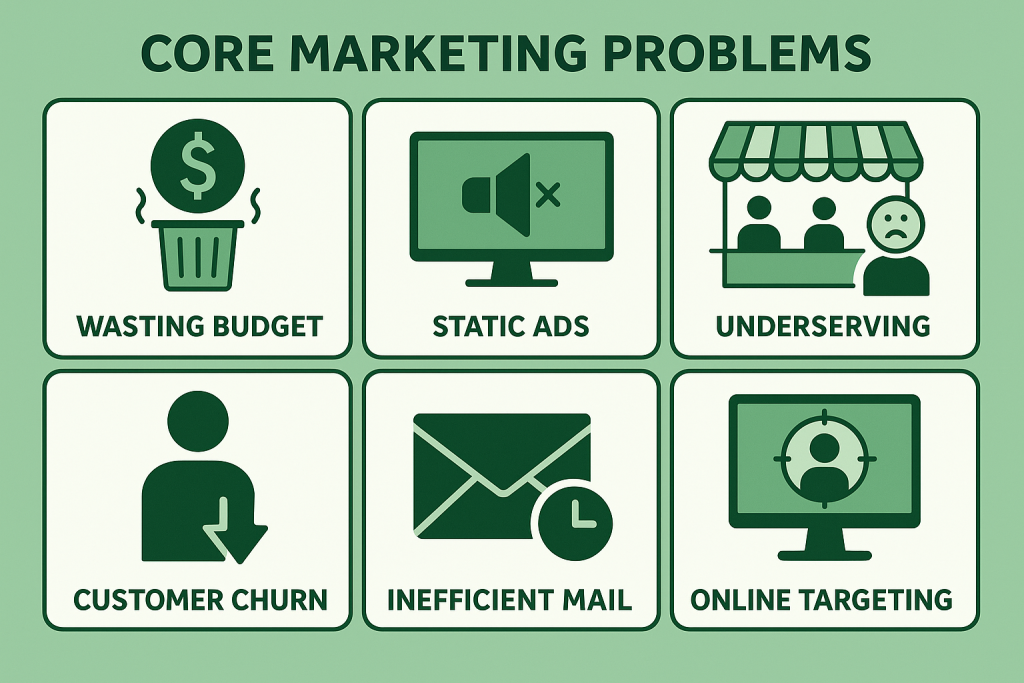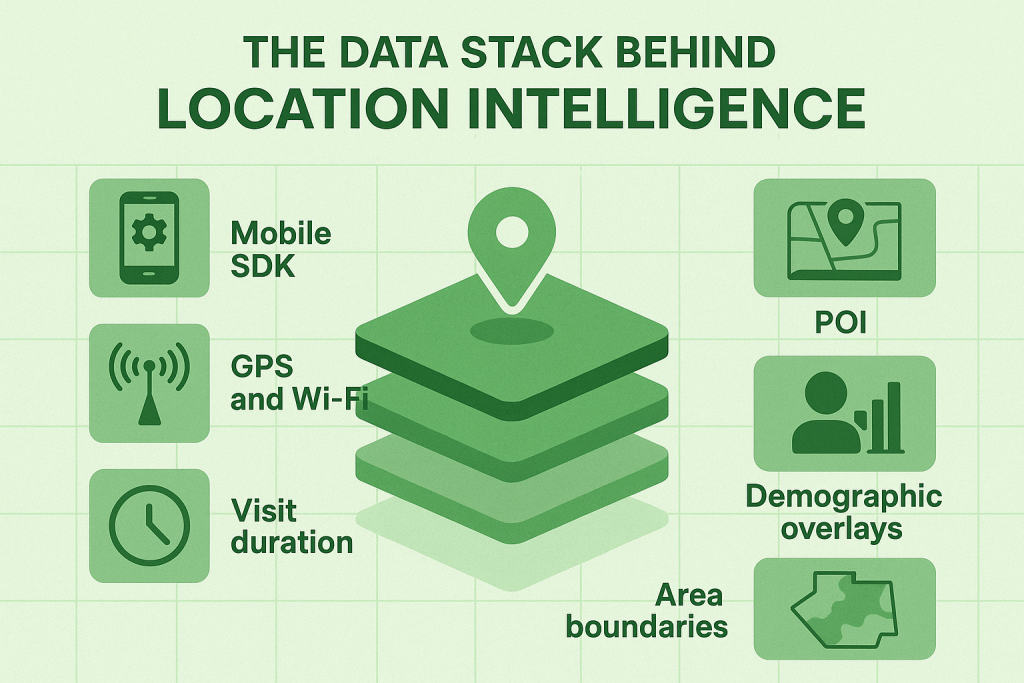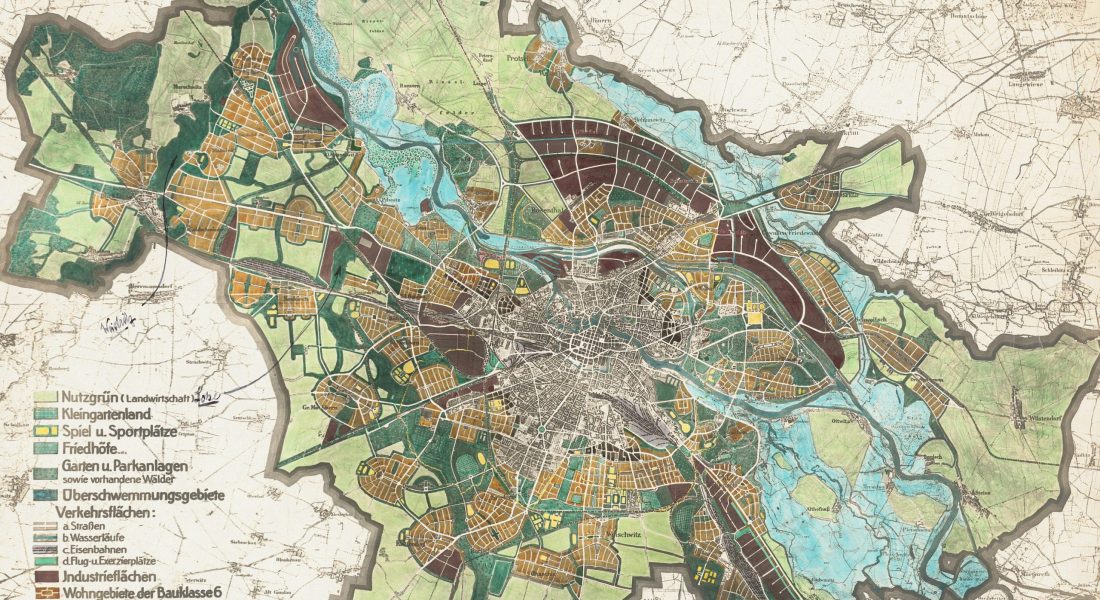Location intelligence isn’t just for maps or logistics anymore – it’s changing how brands run their campaigns. By using geospatial data, marketers can pinpoint where their audiences are, what they do, and when they’re most likely to engage. It’s not about guessing or following trends. It’s about using real movement data to shape everything from offline ads to digital targeting. The result? Less waste, more relevance, and campaigns that actually reach the people they’re meant for.
This article is a deep dive into how location intelligence works in marketing, what kind of data it relies on, and how brands are using it to solve real problems – from cutting waste in offline ads to reclaiming churned customers. Let’s break it down.
What Location Intelligence Really Means in a Marketing Context
At its core, location intelligence is the practice of turning movement data into something marketers can use. That includes geospatial insights from mobile devices, GPS trackers, POI (points of interest) datasets, demographic overlays, and behavioral trends.
Unlike traditional market research or digital tracking, location intelligence connects the physical world with intent signals. It doesn’t just tell you who visits your store – it can tell you where else they shop, when they pass by your ad, and which neighborhoods are quietly full of your best customers. It’s less about maps and more about mapping behavior.
The Shift from Audience to Environment
Marketers love audience segmentation – it’s foundational. But traditional segmentation (age, gender, income) often misses one thing: context.
Where someone lives, works, or commutes can say more about their behavior than a profile ever could. Location intelligence flips the lens from “Who is this person?” to “What environment are they part of?”
This shift lets marketers do things like:
- Focus campaigns on trade areas with real conversion potential.
- Tailor messaging based on local lifestyle clusters.
- Compare foot traffic near competitors vs their own sites.
- Optimize physical and digital ads based on real-world exposure.
Instead of guessing where demand might be, you’re grounding decisions in how people actually move.

6 Core Marketing Problems That Location Data Can Help Solve
Let’s be honest – most marketers aren’t struggling with “not enough tools.” They’re struggling with noise, waste, and uncertainty. Here’s how location intelligence helps cut through.
1. Wasting Budget on the Wrong Zip Codes
Spending money in the wrong neighborhoods is like handing out flyers in a city where no one speaks your language. When ad dollars go to areas full of people who don’t care, or worse, don’t need what you’re offering – it’s not just inefficient. It’s invisible.
With foot traffic and trade area analysis, marketers can stop relying on radius-based targeting and start focusing on where their actual customers come from. This means cutting out irrelevant zones and reallocating budget toward the places that already show signs of traction.
2. Running Static Ads in a Dynamic World
The physical world moves in patterns. Mornings don’t look like afternoons, and weekends don’t behave like weekdays. Yet many offline ads still run like it’s 1995 – one creative, same spot, all day long.
Location intelligence gives you time-of-day insights, so you’re not just paying for ad space, you’re paying for attention. Especially in digital out-of-home formats, you can schedule your ads to align with peak footfall. More eyes, fewer wasted impressions.
3. Underserving High-Value Neighborhoods
Some of your best markets won’t show up in a basic demographic report. They might not even look like high-value areas at first glance. But location data can uncover neighborhoods with unusually high visit density, strong purchase intent, or a rising concentration of your ideal customer profile.
This is particularly valuable for brands planning new stores or pop-ups. Instead of assuming that wealth equals demand, you can map behavior directly, revealing micro-markets you’d otherwise miss.
4. Customer Churn That Goes Unnoticed
Most marketers can see a dip in revenue, but not always where it’s coming from. If a certain pocket of loyal customers stops showing up, it might take weeks (or months) before anyone catches it.
Location intelligence makes churn visible. You can track declining visit rates from specific areas and respond with hyper-local retention strategies. That could mean a mailed coupon, a regionally-targeted digital ad, or a quick win-back promo just for lapsed visitors in that zone.
5. Inefficient Direct Mail
Direct mail still works, but only if it lands in the right mailbox. Too often, brands blast out campaigns based on postal routes, not behavioral relevance. The result? Lots of recycling bin fodder.
By layering demographic data onto footfall insights, marketers can sharpen their mailing lists. Targeting only the neighborhoods that actually generate store visits means fewer wasted print runs, and a higher response rate with less spend.
6. Online Targeting That Misses the Physical Context
Just because someone clicks on an ad doesn’t mean they’ll walk into a store. In fact, plenty of online behavior never translates into real-world engagement. That gap between digital interest and physical presence is where a lot of targeting strategies fall apart.
Location intelligence helps bridge it. You can verify whether a segment actually visits gyms, coffee shops, malls, or competitor locations, not just whether they scroll through them online. It’s a way to validate assumptions and fine-tune your campaigns with real-world proof, not just pixels.
How This Looks in Practice: A Few Examples
This isn’t just theory. Here’s what marketers are doing today with location intelligence tools.
- A fast-casual restaurant chain analyzed traffic at multiple intersections and found their evening ad slots were performing better than morning ones. They re-allocated the budget and saw a 15% increase in foot traffic.
- A coffee brand used psychographic overlays (hipster, creative, local-first) on trade area data to find which shopping zones matched their vibe. That insight helped them pick their next three store locations.
- A retail chain noticed declining visits from two specific zip codes. Instead of running a nationwide offer, they sent a regional promo just to those areas. Redemption rates jumped 42%.
- An ad agency ditched the radius method and switched to true trade area analysis. They discovered that 30% of their clients’ actual customers came from outside the original targeting zone.
Beyond Targeting: The Strategic Benefits of Location Intelligence
Yes, you can use location data to target better. But the value goes deeper.
It Helps You Plan Smarter
Picking a location used to be part guesswork, part gut instinct. Now it’s part data. If you already know how people flow through a trade area, when they visit, how often, where else they go, you can assess whether a potential location fits your model long before signing a lease.
It’s especially useful for retail expansions, franchise planning, or choosing between multiple ad placements. If a neighborhood doesn’t just look promising on paper but behaves like your most successful markets, that’s a green flag backed by behavior, not assumptions.
It Lets You Measure What’s Working Offline
Click-through rates are easy to track. But how do you know if your street-level billboard made anyone walk into your store? Or if your flyer drop last month did anything besides fill a few recycling bins?
With location data, you can connect the dots between ad exposure and actual visits. It doesn’t rely on guesswork or anecdotes. You can compare store traffic before and after the campaign, benchmark it against other locations, or even track how competitor foot traffic changed at the same time.
It Adds Dimension to Customer Journeys
Most customer journey maps stop at the screen. But real life isn’t linear. People go to work, swing by a gym, grab coffee, stop at a store, pick up dinner. And many of those micro-decisions happen within the same physical zones, over and over.
Location intelligence gives you a spatial view of your audience’s day-to-day patterns. Instead of thinking in funnel stages, you start seeing real routines , where your brand naturally fits, and where there might be friction or drop-off. That kind of awareness helps you make marketing feel less like interruption and more like presence.
It Uncovers Your Overlap with Competitors
You’re probably not the only option in town, and neither is your competitor. The real picture is often more fluid. Customers move between brands, stores, and locations based on timing, convenience, or subtle preference shifts.
By analyzing visit data across multiple venues, you can see where and when you’re being chosen or passed over. Maybe your store wins the weekday lunch crowd, but loses out on weekend traffic. Maybe a nearby competitor is pulling more return visits from a particular neighborhood than you are. These aren’t just insights. They’re starting points for action, whether that means shifting offers, rethinking store hours, or launching a local campaign that speaks more directly to that audience.

The Data Stack Behind Location Intelligence
To make this work, here’s what’s usually in the mix:
- Mobile SDK data (anonymized location signals from apps).
- GPS and Wi-Fi triangulation.
- POI databases (points of interest like stores, gyms, restaurants).
- Demographic overlays (age, income, lifestyle).
- Visit duration and frequency (helps measure loyalty).
- Trade area boundaries (true zones, not just radius rings).
Good platforms turn this into visual dashboards or layered maps. Great platforms give you exportable insights, API access, and campaign-ready audience segments.
Key Use Cases, Broken Down by Campaign Type
Here’s where location intelligence shines the most:
For Digital Campaigns:
- Validate online audiences against offline behavior.
- Create geo-enriched lookalike audiences.
- Run precise geofencing without relying on guesswork.
For Offline Advertising:
- Optimize DOOH timing based on hourly foot traffic.
- Avoid overpaying for high-traffic zones that don’t match your target.
- Prove ROI with visit uplift and footfall attribution.
For Direct Mail:
- Select postal routes based on actual customer clusters.
- Cut costs by avoiding unreceptive neighborhoods.
- Test geographic variants of creative in small batches.
For Loyalty and CRM:
- Identify neighborhoods with churned customers.
- Target win-back campaigns spatially.
- Tailor promotions based on repeat visit frequency.
Questions to Ask Before You Start
If you’re thinking about integrating location intelligence into your marketing, start here:
- Do we have a clear picture of where our customers come from?
- Are we overinvesting in ad zones that don’t convert?
- Are we measuring foot traffic impact from our campaigns?
- Could we plan smarter store expansions based on behavior, not just population?
You don’t need to overhaul everything at once. Start with one use case, say, optimizing a billboard location, and expand from there.

How FlyPix AI Supports Smarter Marketing with Geospatial Insight
At FlyPix AI, we help marketers and analysts turn geospatial imagery into clear, actionable insight, fast. Our AI-driven platform processes satellite, aerial, and drone images at scale, allowing you to detect, monitor, and map what’s happening on the ground with precision. Whether you’re tracking land use, infrastructure trends, or other visible patterns in imagery, we make it possible to translate complex imagery into real-world context in seconds, not hours.
When teams need to understand physical changes on the ground, such as land use or infrastructure, we provide that visibility through AI-powered image analysis. Instead of relying on guesswork or static data, you can train custom models on what matters to your use case – storefronts, roads, rooftops, vehicles, construction zones, or virtually any physical object visible in imagery. It’s all about giving you control over your data without needing a background in AI or GIS.
For marketing strategies that depend on knowing what’s happening where and when, we close the gap between what you see from the sky and what you can actually use to drive better decisions on the ground.
Final Thoughts
Marketing isn’t just about reaching the right people anymore. It’s about reaching them in the right place, at the right time, with a message that makes sense in their real-world context. Location intelligence brings that missing layer to the table.
It helps marketers work with reality, not just personas, assumptions, or dashboards. Whether you’re placing a digital billboard, picking a new store site, or just trying to cut ad waste, geospatial insight gives you the clarity to move with confidence. Because when you stop guessing where your customers are, everything else starts making more sense.
FAQ
Demographic targeting tells you who someone is – age, income, maybe interests. Location intelligence tells you where they are and what they do in the real world. It adds behavioral context to the data you already have, so you’re not just targeting “urban professionals aged 30-40,” but the ones who walk past your store at lunch and visit your competitor on weekends.
Yes, when handled properly. Most location intelligence tools rely on anonymized, aggregated data that can’t be tied back to individuals. It’s about patterns, not people. Still, it’s good practice to make sure the vendors you use are transparent about their sources and compliant with GDPR, CCPA, and other relevant regulations.
It’s becoming more accessible. You don’t need a full data science team or expensive software to start using it. There are tools and platforms that let even small teams map foot traffic, analyze trade areas, or refine local campaigns with spatial data. Start small, maybe with one neighborhood or store, and scale from there.
It’s surprisingly reliable when sourced from quality datasets. While it’s not exact down to the step, good providers can show strong directional trends, like peak visit times, loyalty over time, or which nearby stores your customers are also visiting. It’s less about precision down to the meter and more about seeing the full picture.
You can definitely use it for both. Location data can help validate your online audience segments, tighten your geofencing strategy, and make sure your digital ads are actually reaching people who live, work, or move through the areas you care about. It’s a great way to bridge the gap between digital signals and physical behavior.
Start by asking where your customers come from, literally. If you don’t have that answer yet, a location intelligence tool can help you find it. From there, you can test one use case, maybe optimizing a billboard placement or cleaning up a direct mail list, and build out gradually as you see results.
